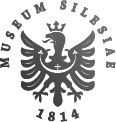This park became the foundation for the current arboretum and forms the historical section of the dendrological exhibition, which gradually expanded to its current 23 hectares. In 1928 Quido Riedl returned to his native Bílá Lhota, near the town of Litovel, where, on slightly less than 3 hectares of land, he laid out a similarly impressive park, with a rich collection of trees that later became the foundation for the Bílá Lhota Arboretum. Riedl left the Nový Dvůr estate to his daughter, Elisabeth Schubert and son-in-law Walter Schubert, who tended to the park until the end of the Second World War.
The garden’s design concept suffered following the departure of Quido Riedl, as development stagnated and no new innovations were introduced. Care for the park was limited to only essential maintenance. In the post-war period the Nový Dvůr estate went through a number of owners, while the park was deprived of expert supervision and became overgrown and neglected.
The situation changed in 1958, when the park – one of the most valuable dendrological sites in Silesia – was given to the Silesian Museum, which set up the arboretum. The historical part of the dendrological exhibition has been preserved in its natural, landscaped form and, apart from the value of the trees as a collection, the park itself is of immense worth due to its design and composition. The basic structure of the park consists of fully-grown, solitary or grouped pine trees of the Heraltice ecotype, or vegetation surrounding them, which alternate with grassy open spaces. The compositional design of the park allows views of interesting tree combinations showing contrasting structures, textures, habits, autumn colouration or colour and intensity of blossoming.
The newer parts of the dendrological exhibition are based on a different concept. The overall composition is, here, subordinate to the division of the park into geographical units; under the overall title of ‘The Trees of Five Continents’, each section contains geographically related species. Between 1967-70 a large greenhouse complex was built over an area of 1,300 m2, containing an exhibition of subtropical and tropical plants. This complex was open to visitors for 30 years before it had to be demolished in 2000 due its poor technical condition. It was replaced with a fully-equipped silvicultural greenhouse, part of which was opened to the public in 2010 in the form of a small greenhouse exhibition.
The new manor house was built in the Neo-Renaissance style by Baron Antonín Luft following his acquisition of the Nový Dvůr estate, and used by Quido Riedl between 1906-28. It was confiscated by the Czechoslovakian state in 1945. In the post-war period the manor has housed the Charita organisation from Ostrava (1947-48), was used as a tractor workshop and administrative centre from 1952-54, served as the offices of the local branch of the National Committee from 1958, and it was only after 1958 that it became the administrative building of the newly established arboretum. The old manor house, built in the Empire style, was built by the then-owner of the Nový Dvůr estate, Ludvík Klettenhof, before 1836. The building stood at the centre of a farm, with a quadrangle situated around 100m to the east of the new manor house, with a tree-lined avenue leading off to the south. Following completion of the building of the new manor house, it served as the administrative building and accommodation for the estate. The derelict, abandoned old manor house building was demolished, together with the northern part of the farm building, in 1965-66.
Article last updated: 30.07.2012
Print whole article



